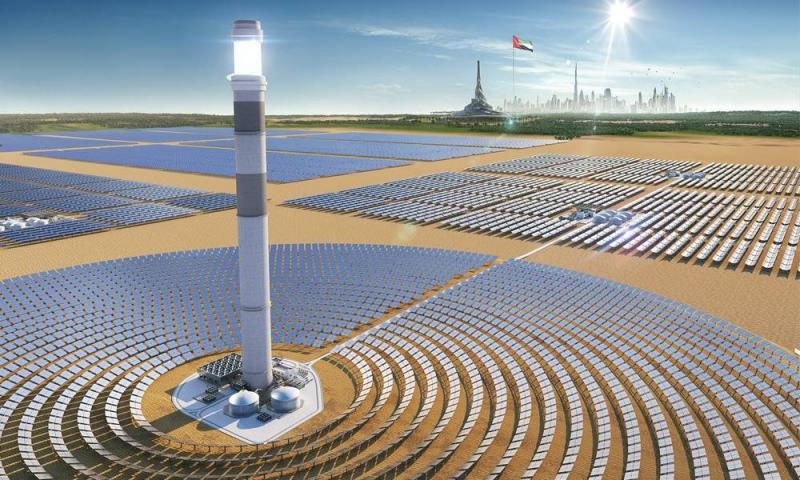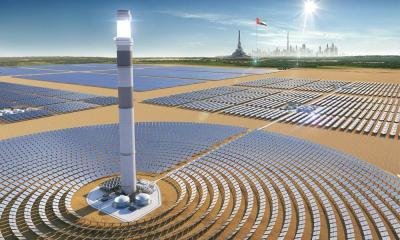Under the title "Mohammed bin Rashid Al Maktoum Solar Park in Dubai: A New Station Among Renewable Energy Projects," the euronews website published a report on the Mohammed bin Rashid Al Maktoum Solar Park in Dubai. The article noted that many hope renewable energy technology will overcome the impacts of climate change, thanks to projects like the Mohammed bin Rashid Al Maktoum Solar Park located in the southern desert of Dubai.
It is the largest single-site solar power station in the world, equipped with millions of photovoltaic solar panels, capable of converting sunlight into approximately 1,000 megawatts per hour and supplying energy to more than 320,000 homes. This station, mainly owned by the Dubai Electricity and Water Authority (DEWA), plans to double its energy production in upcoming phases, which includes launching the tallest concentrated solar power tower in the world. The tower stands approximately 260 meters tall, about 60 meters shorter than the Eiffel Tower, and uses 70,000 reflective heliostats to convert sunlight into thermal energy and store it for roughly 15 hours.
Established in 2013, the park is expected to reach its fifth and final phase in the next two years and offset 6.5 million tons of carbon emissions annually. Achieving this goal, according to experts and stakeholders, requires an early investment strategy that begins with building human capital.
In response to the question of how investment in renewable energy technology should be approached, whether it's purely financial or involves other factors, Dr. Aisha Al Nuaimi, Executive Director of the Innovation Center at DEWA, stated, "When you educate young people at an early age, they understand the challenges facing solar energy from now on, and they can envision solutions that contribute to addressing these challenges."
Regarding the most difficult challenges faced in advancing renewable energy, Al Nuaimi added, "Currently, if you look at how technology tackles dust, there are cleaning robots, but at a high cost. There is an anti-pollution coating based on nanotechnology. We have tested many, but unfortunately, nothing works effectively in such harsh conditions, which is why we need to conduct more research and innovations in this area."
By developing practical solutions such as photovoltaic trees that act as a solar energy generation and storage station, along with solar-powered streetlights and walkways, the city is taking the less traveled path. While Dubai moves towards a sunny, low-carbon future, the United Arab Emirates as a whole still relies on traditional energy sources; however, it is making significant strides to pave the way forward through strategic investment.
In 2019, the solar park provided three percent of Dubai's total energy demand. Before that, Dubai was almost 100% reliant on natural gas, while the UAE still depends entirely on fossil fuels to meet its needs. Nevertheless, it aims to make environmentally friendly changes through the unified "Energy Strategy 2050," which aims to reduce carbon emissions resulting from energy generation by 70%. This goal requires allowing more foreign investments and potentially developing the renewable energy sector.
Dr. Jaganathan Ramaswamy, an independent energy and sustainability analyst, believes that "lifting restrictions from the energy market allows many players to participate in the energy system. So when you welcome players, it’s natural for them to invest money." In Dubai, DEWA has already attracted around 9 billion euros in investments and public-private partnerships.
In line with the Paris Climate Agreement of 2015, the UAE uses a mix of solar, nuclear, and other renewable energy sources, which will create a need for smarter technology to manage them in the future. Ramaswamy added, "The mantra or magic recipe encompasses decarbonization actions, decentralization, and digitization. Thus, it will bring big data, data analysis, artificial intelligence, and possibly also blockchain technology."
The exact way advanced technology will manage renewable communities in the future remains unknown, but one thing is certain: it is today in the hands of future innovators.




